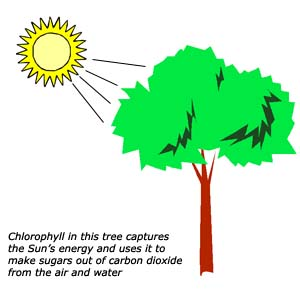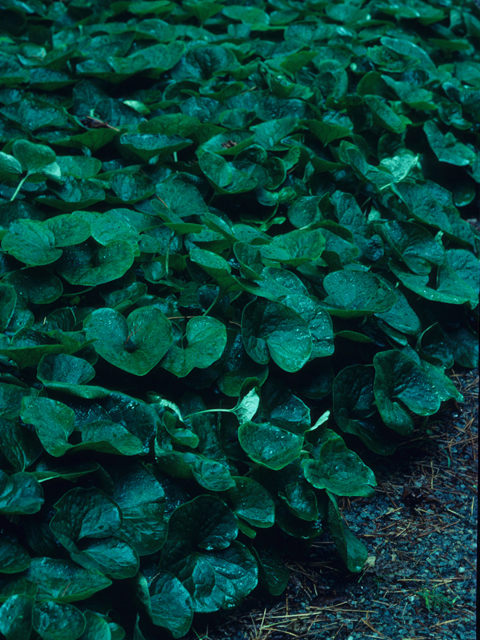Don't "Leaf" Me Starving!
 Asarum
canadense is an autotroph which means it creates its own
food supply through photosynthesis. Water, minerals from the
soil, and carbon dioxide from the air are the only nutrients
that are needed for Canadian wild ginger, as well as most other
plants. Light is also very important because it is used to
synthesize organic substances.
Asarum
canadense is an autotroph which means it creates its own
food supply through photosynthesis. Water, minerals from the
soil, and carbon dioxide from the air are the only nutrients
that are needed for Canadian wild ginger, as well as most other
plants. Light is also very important because it is used to
synthesize organic substances.
Every green part of a plant contains chloroplasts, which are the
site of photosynthesis, however the leaves are the main location
for photosynthesis to take place. The leaves of Canadian wild ginger need to be large because the plant grows
low to the ground and is usually in shade. The large leaves try
to capture as much sunlight as possible in order to photosynthesize. The
first stage of photosynthesis consists of the conversion of
solar energy to chemical energy. This stage is often known as
the "light reaction." The solar energy plus water produces
oxygen and creates ATP, which is used in the Calvin Cycle. The
Calvin Cycle, the second stage of photosynthesis, produces
sugar. This stage is often know as the "dark reaction." Carbon
dioxide is incorporated with already present organic molecules
to begin the process.http://www.plants.usda.gov/java/profile?symbol=ASCA&photoID=asca_005_ahp.tif
Canadian wild ginger need to be large because the plant grows
low to the ground and is usually in shade. The large leaves try
to capture as much sunlight as possible in order to photosynthesize. The
first stage of photosynthesis consists of the conversion of
solar energy to chemical energy. This stage is often known as
the "light reaction." The solar energy plus water produces
oxygen and creates ATP, which is used in the Calvin Cycle. The
Calvin Cycle, the second stage of photosynthesis, produces
sugar. This stage is often know as the "dark reaction." Carbon
dioxide is incorporated with already present organic molecules
to begin the process.http://www.plants.usda.gov/java/profile?symbol=ASCA&photoID=asca_005_ahp.tif

Each leaf contains microscopic pores, called stomata, that carbon dioxide enters through and oxygen exits. The leaves are obviously very important in photosynthesis, but the roots play a big role as well. Water is absorbed by the roots and then transported to the leaves via veins. The veins are also used to transport sugar from the leaves to the roots. To learn more about photosynthesis and the structures involved visit the Online Biology Book.
Some other interesting plants that undergo photosynthesis are sunflowers, English ivy, and coffee.